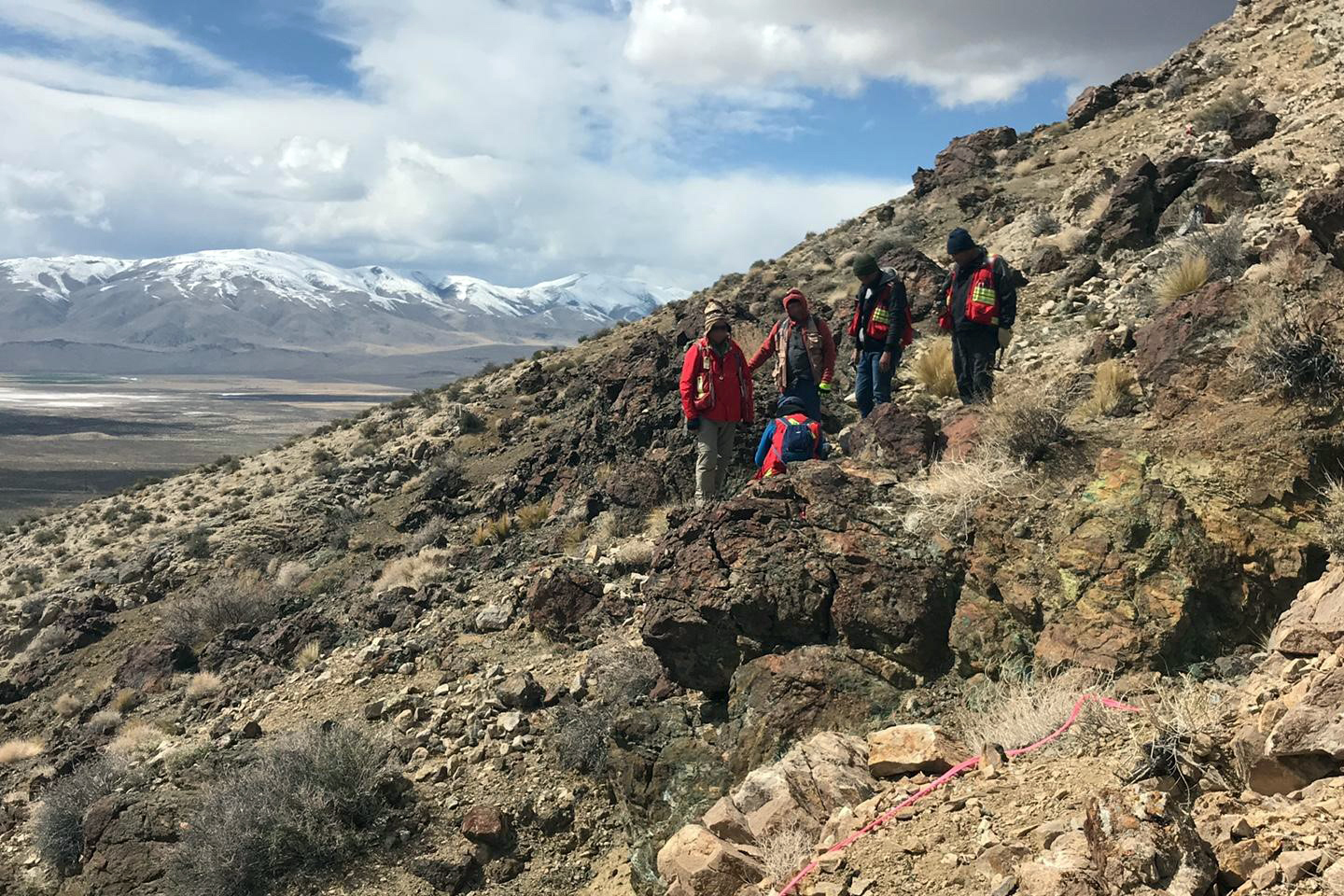Mineral Resource Systems
The Mineral Resource Systems research group studies geological processes that produce some of our essential resources deep inside the Earth.
The focus lies on hydrothermal fluid systems forming deposits of metals like copper, gold and molybdenum. Economic deposits of many rare elements used in everyday life are enriched by hot fluids circulating through rocks in areas of active magmatism, both on land and on the sea floor. Fluids also play a key role in triggering volcanic eruptions, and are key to the extraction of geothermal energy from deep-seated rocks, a major potential energy resource for heating and electricity generation in the future.
The Mineral Resource Systems research group at ETH Zurich is led by Cyril Chelle-Michou.

Ore deposit studies currently focus on well-exposed magmatic areas in Southeastern Europe and the Chilean and Argentinian Andes, in Western America and Australia. Scientists and graduate students map the geology and collect rock samples that preserved the different stages of metal transport prior to exposure by erosion. This research is commonly carried out in cooperation with active mining companies, as deep exploration drill cores and active mines provide an excellent three-dimensional archive of large hydrothermal systems. In return, understanding the process of ore formation helps the industry in finding new deposits, and is a basis for estimating global resources of essential commodities. To understand the transport processes in extinct and active hydrothermal systems, several laboratory and modelling approaches are combined, including mineralogy, fluid inclusion research, isotope geochemistry and advanced computer simulations.
Fluid inclusions are droplets of ancient ore fluid that were enclosed in minerals when they crystallised during ore formation. Mineral samples collected near the Earth's surface today thus record the properties of hydrothermal fluids, which flowed through rocks at greater depth, millions of years ago. To analyse selected element concentrations in these tiny fluid samples, the research group has pioneered the development of a micro-analytical technique that has greatly advanced the field of ore deposit research over the last decade. Single fluid inclusions are 'drilled out' with an ultraviolet laser, until the fluid content is released for quantitative analysis with a sensitive mass spectrometer. Such analytical information can be combined with data about the temperature and pressure obtained from the same fluid inclusions, to reconstruct the chemical and physical conditions favouring the generation of a rich ore deposit.
Flow models, permeability evolution and knowledge of chemical element transport by hot fluids are fundamental for the use of geothermal energy, including enhanced geothermal systems being explored in Switzerland. Therefore, we collaborate closely with geophysicists and engineering geologists to explore and better understand deep geothermal reservoirs.
Contact
Inst. für Geochemie und Petrologie
Clausiusstrasse 25
8092
Zürich
Switzerland
Inst. für Geochemie und Petrologie
Clausiusstrasse 25
8092
Zürich
Switzerland